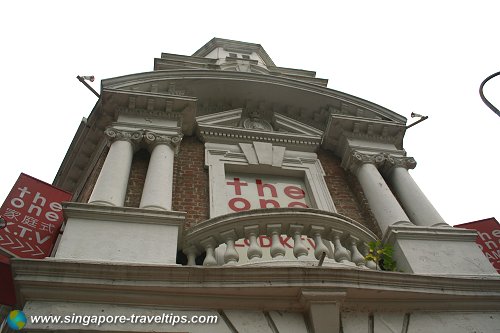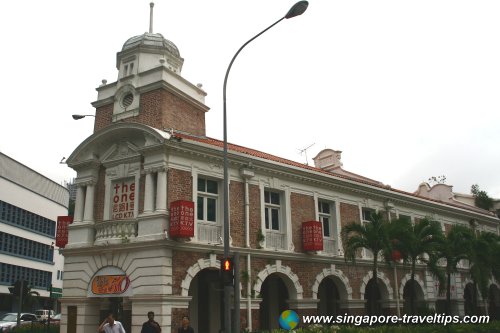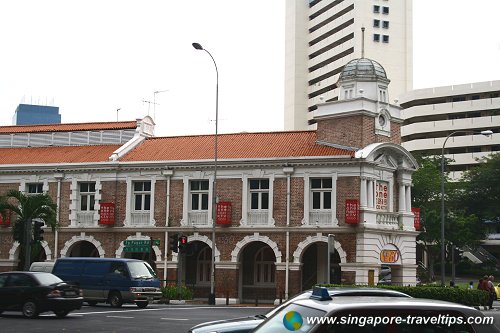 Path at Jinricksha Station (9 July 2006)
Path at Jinricksha Station (9 July 2006)
Jinricksha Station is a heritage building that was once the depot for rickshas in Singapore. Also written Jinriksha Station and Jinrikisha Station, it is located at the junction of Neil Road and Tanjong Pagar Road. The Jinricksha Station was built around 1903 and 1904. The architect was D.M. Craik while Samuel Tomlinson was the civil engineer. The site at the junction of Neil and Tanjong Pagar Road was chosen because it is near the Tanjong Pagar Docks and Tanjong Pagar Road leads from the docks to the town. Originally, the Jinricksha Station was built of exposed brickwork. It has since been painted over.
The Jinricksha Station stands as a lasting reminder of the once ubiquitous rickshaws that plied the streets of Singapore. Rickshaws were introduced in Singapore in the 1880s. Initially they were imported from Shanghai. Their numbers quickly swelled to about one thousand by the the end of the 19th century, and newly-arrived immigrant took to pulling rickshaws as a means of earning a living. The demand for rickshaws was so high that cheaper models made in Japan were imported. By 1919, the number of rickshaws have risen to 9,000 and were manned by 20,000 rickshaw pullers working in shifts.
Rickshaw pullers lived a hard life. Many were too poor to afford their own rickshaw, and had to rent them. Until 1904, all the rickshaws were two-seaters. The weight that had to be pulled was almost unbearable to many rickshaw pullers. Many turned to opium to relieve their suffering.

Jinricksha Station, as seen from Neil Road (9 July 2006)


Jinricksha Station, as seen from Tanjong Pagar Road (10 July 2006)

The government tried to ban the two-seater rickshaw in 1911, but opposition to the ban delayed its passing into law for another three years. It was a while before the single-seater rickshaw become popular and the two-seater became obsolete. Eventually, the rickshaws themselves were replaced by more efficient means of transport, including the trishaw, the electric tram, the bus and the car. Over time, rickshaws disappeared from the streets of Singapore.
Getting there
The Jinricksha Station is about equal distance from the Chinatown (NE4), Outram Park (EW16 / NE3) and Tanjong Pagar (EW15) MRT Stations.List of the Historic Buildings in Singapore; Discover Singapore
 Copyright © 2003-2025 Timothy Tye. All Rights Reserved.
Copyright © 2003-2025 Timothy Tye. All Rights Reserved.
Copyright © 2003-2025 Timothy Tye. All Rights Reserved.

 Go Back
Go Back